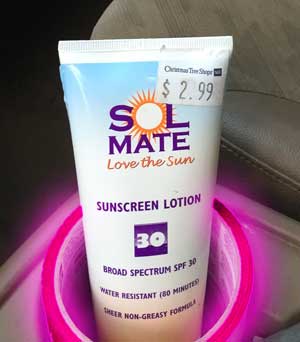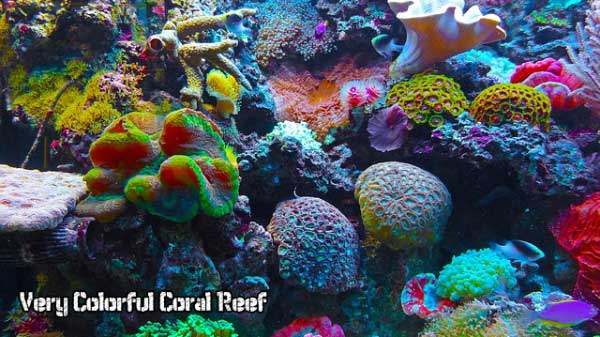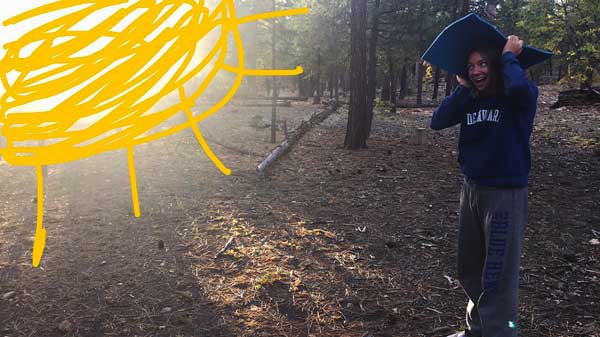
The real reason the tape is still in my cup holder – it fits so heartwarmingly well in the center circle of my duct tape roll.
Like any young person dutifully fulfilling their role as a “20-something,” my car is host to an eclectic mix of random junk.
In the front seat alone you will find a smooth, hamburger-sized rock I use to hammer in the stakes of my tent, a nearly spent roll of neon pink duct tape, and a collection of CDs featuring mostly early 2000s jams. But, of all of the things in my front seat, a $2.99 tube of sunscreen is the thing that makes me feel truly adult-like.
Yes, Sunscreen – an indication that I might be taking care of myself – is the pinnacle of adulthood, responsibility, and other scary words.
However, what I perceived as the neon, flashing sign of adulthood turns out to be a whole lot less ‘responsible’ than I imagined.
On a recent trip to the ocean, my protective layer of maturity slipped right off my body and went directly into the ocean. And it might have hurt coral reefs and baby seals.
In our class Water Wonders, we teach students about the increasingly severe threats to clean water. As many students come from coastal, or near-coastal cities, discussing the management of our oceans is not only a relevant, but also essential. Which brings me to that $2.99 sunscreen…
According to the journal Environmental Health Perspectives, every year swimmers introduce a potential 4,000-6,000 tons of sunscreen into the oceans. 1
An investigation into the ingredients of my sunscreen revealed a list of unpronounceable and unfamiliar chemicals: oxybenzone, benzophnone, methylparaben, isopropylpythalimide, to name a few, none of which Microsoft Word actually recognizes as real words.
 As it turns out, this gibberish ingredient list isn’t doing much good for our oceans, in particular our coral reefs and their inhabitants. Looking closer at the study published in Environmental Health Perspectives, chemicals in sunscreen cause viruses in zooxanthellae to reproduce until the algae explodes, spreading the virus into nearby communities.
As it turns out, this gibberish ingredient list isn’t doing much good for our oceans, in particular our coral reefs and their inhabitants. Looking closer at the study published in Environmental Health Perspectives, chemicals in sunscreen cause viruses in zooxanthellae to reproduce until the algae explodes, spreading the virus into nearby communities.
Zooxanthelle are the polyps that make up a coral reef’s host algae. They provide the CO2 algae need for photosynthesis, while the algae, in turn, provides nourishment and that coral color for its host.
Coral polyps are tiny, soft-bodied organisms related to sea anemones and jellyfish. At their base is a hard, protective limestone skeleton called a calicle, which forms the structure of coral reefs. 2
 The loss of this zooxanthelle algae leads to coral bleaching, a stress response coral reefs undergo that causes them to turn white and often kills them (let’s not forget coral is a living animal)!
The loss of this zooxanthelle algae leads to coral bleaching, a stress response coral reefs undergo that causes them to turn white and often kills them (let’s not forget coral is a living animal)!
Our researchers at Environmental Health Perspectives 3estimate that nearly 10 percent of coral reefs worldwide are threatened by sunscreen that washes off of swimmers, in particular large coastal tourism centers.
So What?
The importance of coral reefs cannot be understated. As home to one quarter of marine species, coral reefs provide resources for over 500 million people and boast a global economic value of $375 billion every year, according to an article published by Columbia University. 4 As of 2011, 10 percent of reefs are damaged beyond repair and 75 percent are at risk due to global and local stressors, with projections of virtually all coral reefs being under threat by 2050.
In addition to hurting coral reefs, Hunter Lenihan, a marine ecology professor at UC Santa Barbara, says that at large beaches, the threat is even more significant to marine life. “In big places like Los Angeles or Florida, it could cause significant problems,” he said of the metals found in sunscreen. 5 It’s possible that the microscopic metals found in most sunscreens can alter the cell structure of marine animals in such a way so as to make their embryos vulnerable to other toxins and pollutants in the water.
Now What?
Throughout their time at High Trails, we teach students about the importance of protecting ourselves from the sun. In fact, we consider sun protection to be an essential item in a survival situation.
How do we reconcile protecting our bodies with also protecting our precious resources and environment?
There are several alternatives to traditional sunscreen mixtures. The Environmental Working Group suggest 235 sunscreens that fit the criteria of mitigating environmental harms, while still working efficiently. 6 Another option is making sunscreen at home. You can also DIY it; last year I whipped up a batch of sunscreen from basic ingredients and served it out of an old Cookie Butter jar, to the surprise and woe of one hungry roommate. Whoops.
Additionally, sunscreen may be used as a last resort. The Environmental Working Group suggests first protecting yourself with clothing, finding or making shade, wearing sunglasses, planning around the sun and checking the UV index before applying a layer of sunscreen.
The dichotomy between protecting ourselves and our oceans will take time to resolve; however, by understanding how even our smallest actions impact our surroundings is the first step in creating a successful solution.
 At High Trails Outdoor Science School, we literally force our instructors to write about elementary outdoor education, teaching outside, learning outside, our dirty classroom (the forest…gosh), environmental science, outdoor science, and all other tree hugging student and kid loving things that keep us engaged, passionate, driven, loving our job, digging our life, and spreading the word to anyone whose attention we can hold for long enough to actually make it through reading this entire sentence. Whew…. www.dirtyclassroom.com
At High Trails Outdoor Science School, we literally force our instructors to write about elementary outdoor education, teaching outside, learning outside, our dirty classroom (the forest…gosh), environmental science, outdoor science, and all other tree hugging student and kid loving things that keep us engaged, passionate, driven, loving our job, digging our life, and spreading the word to anyone whose attention we can hold for long enough to actually make it through reading this entire sentence. Whew…. www.dirtyclassroom.com
- http://www.ncbi.nlm.nih.gov/pmc/articles/PMC2291018/ ↩
- http://animals.nationalgeographic.com/animals/invertebrates/coral/ ↩
- http://www.ncbi.nlm.nih.gov/pmc/articles/PMC2291018/ ↩
- http://blogs.ei.columbia.edu/2011/06/13/losing-our-coral-reefs/ ↩
- http://news.nationalgeographic.com/2015/05/150514-sunscreen-nanoparticle-nanotechnology-oceans-marine-beach-boat-toxic/ ↩
- http://www.ewg.org/2015sunscreen/best-sunscreens/best-beach-sport-sunscreens/?tag=2012SunscreenAd&gclid=CKzlwtLqzMgCFY-Vfgod5cwGkw ↩




Comments are closed.